ABSTRACT
More than three hundred years ago, Seattle City was a place of wilderness, occupied by non-humans and the Duwamish Tibe and Suquamish. After the continuous human habitation of the village site, the dominance of Seattle has eventually shifted from non-humans to humans. While non-humans have been lived in the city all the time and seek a better living space.
The project proposes a multi-functional green network operating at different scales to cohabitate and reconnect between humans and non-humans. It restores natural habitat patches in existing locations of urban green spaces in Seattle City and connects them with co-habitation corridors in public lands. With continuous access to humans and non-humans, different types of habitats, and distinct types of public space, it seeks to integrate ecological and social values with cultural manifestations.
Image
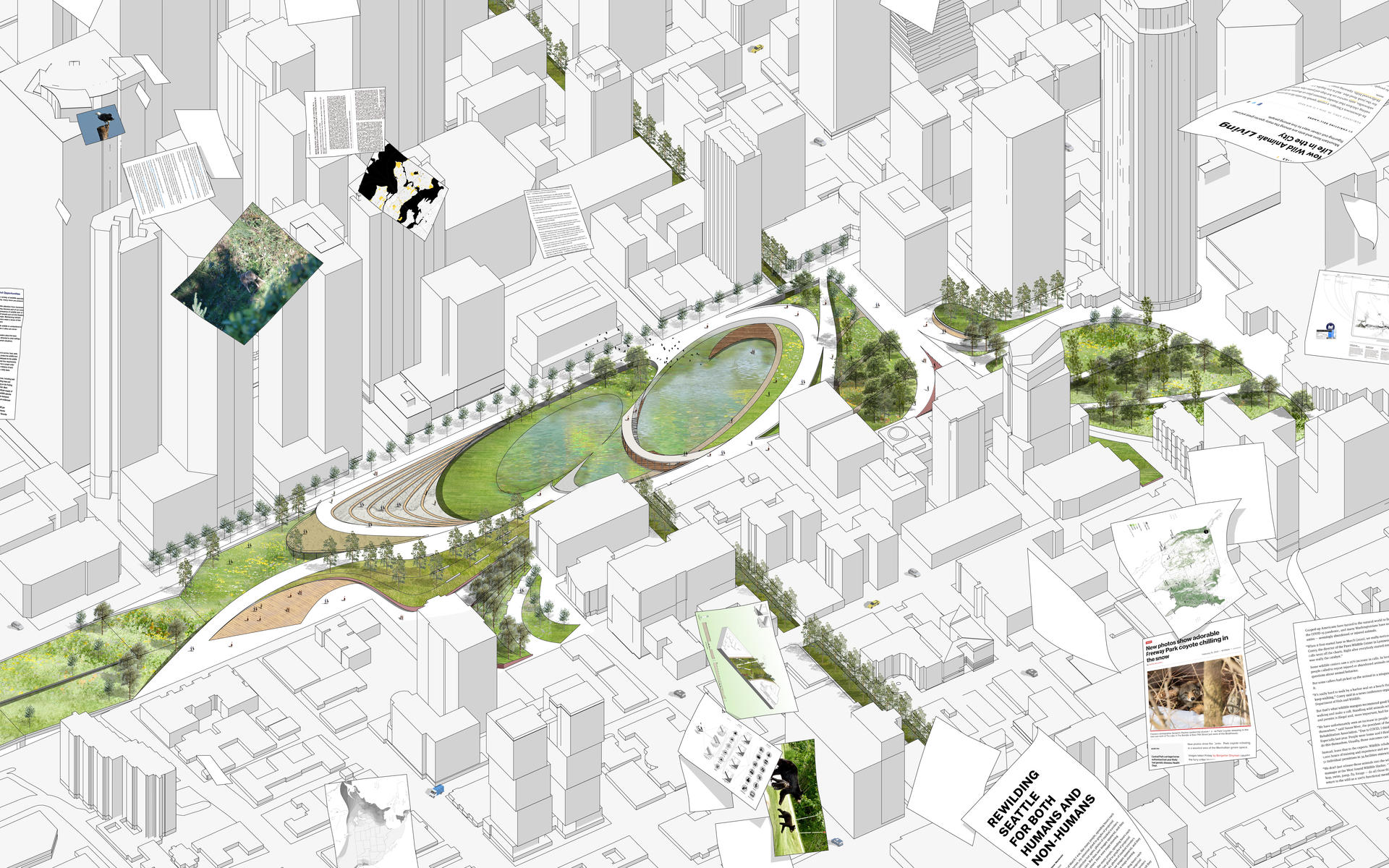
The New Freeway Park
Material / Medium: Digital
Dimensions: 32 X 20 Inches
Year: 2021
Through the whole green network, it connects and renovates relevant green spaces. The new freeway park show how it functions as a central station for non-humans to connect different corridors.
Image

The Origin of Life on Earth
Material / Medium: Digital
Dimensions: 16 X 10 Inches
Year: 2021
"Language, tool use, social behavior mental events, nothing really convincingly settles the separation of human and animal."
-Donna Haraway
Image
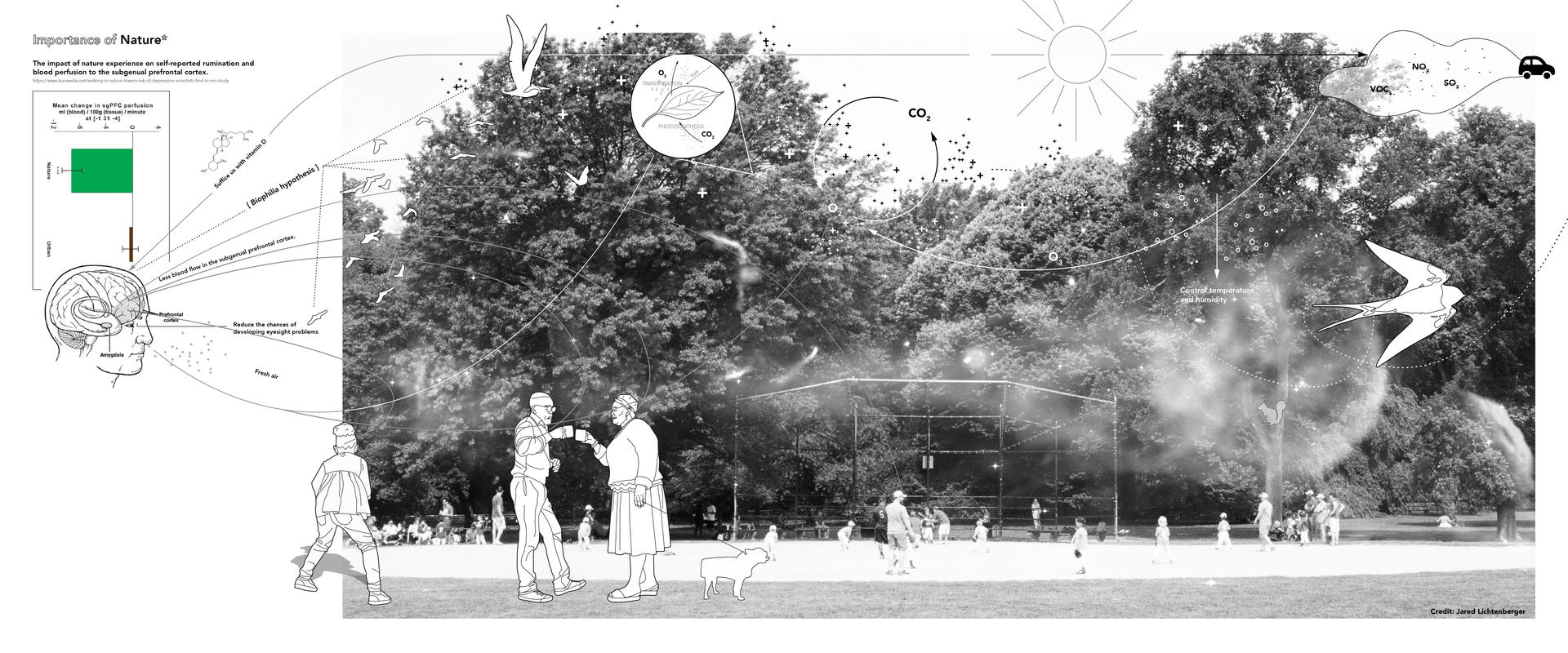
Importance of Nature
Material / Medium: Digital
Dimensions: 16 X 10 Inches
Year: 2021
The existence of nature is always an important part of urban areas. The biophilia hypothesis suggests that humans possess an innate tendency to seek connections with nature and other forms of life.
Image
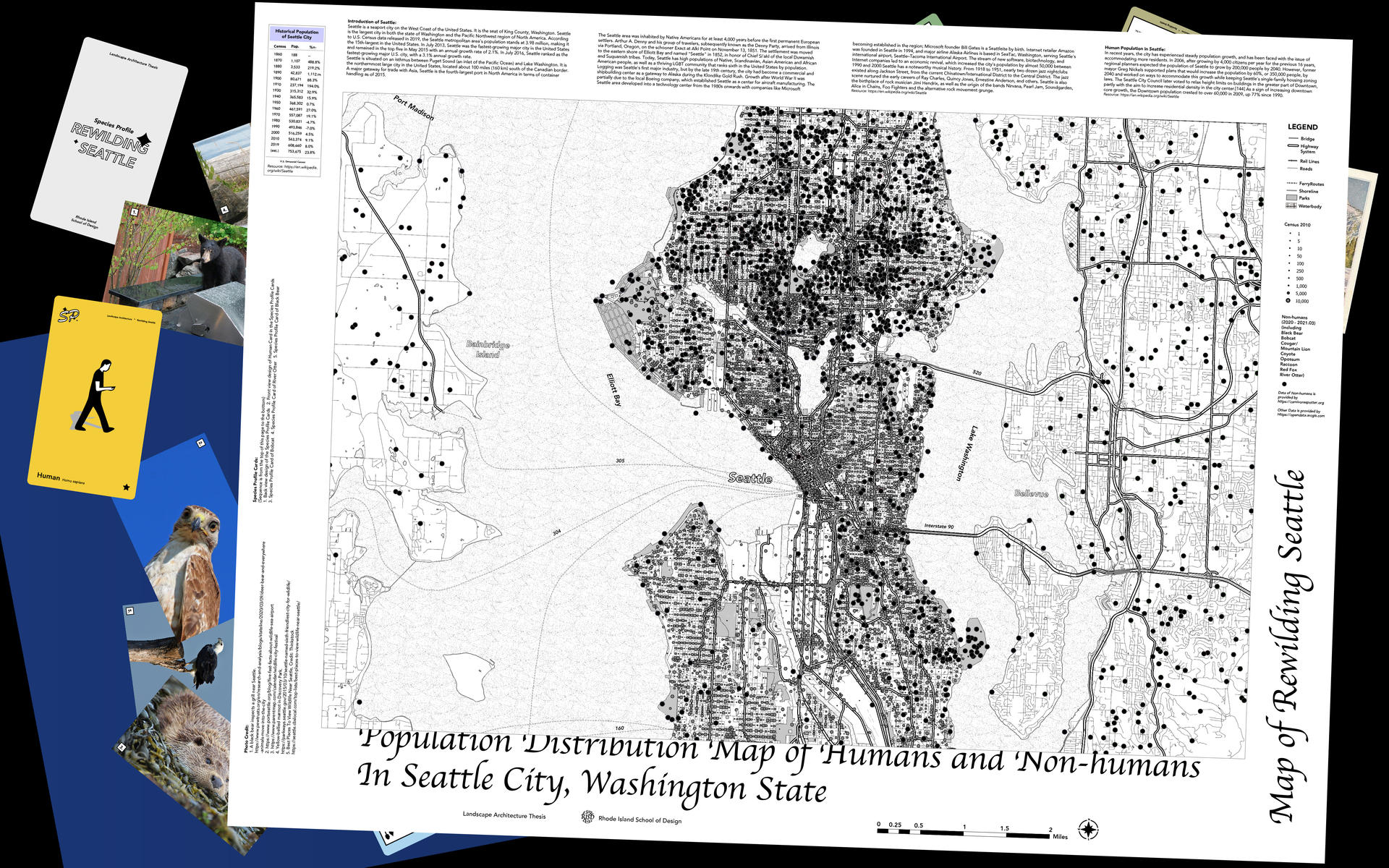
Population Distribution Map
Material / Medium: Digital
Dimensions: 16 X 10 Inches
Year: 2021
Image
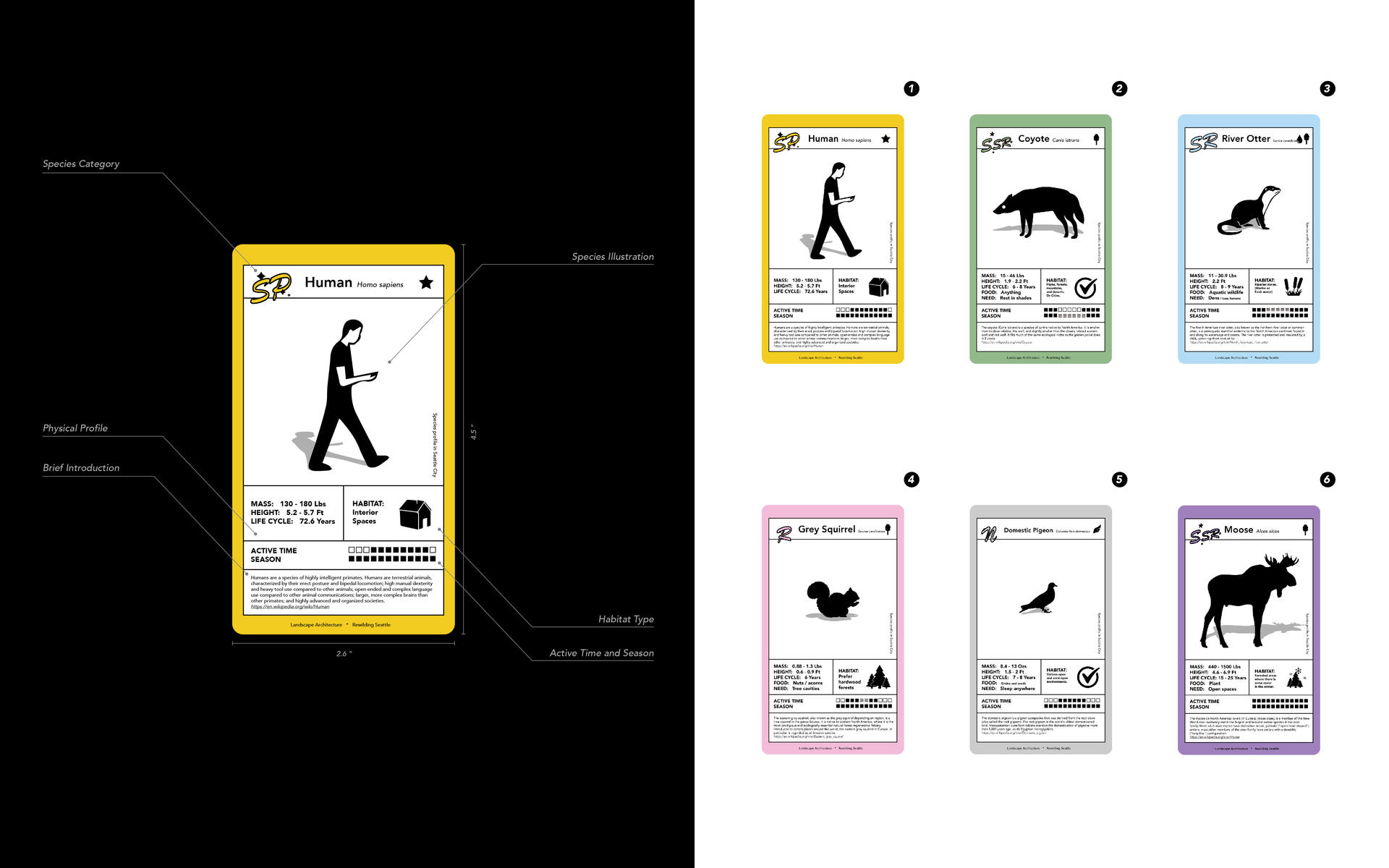
Species Profiles
Material / Medium: Digital
Dimensions: 16 X 10 Inches
Year: 2021
Image
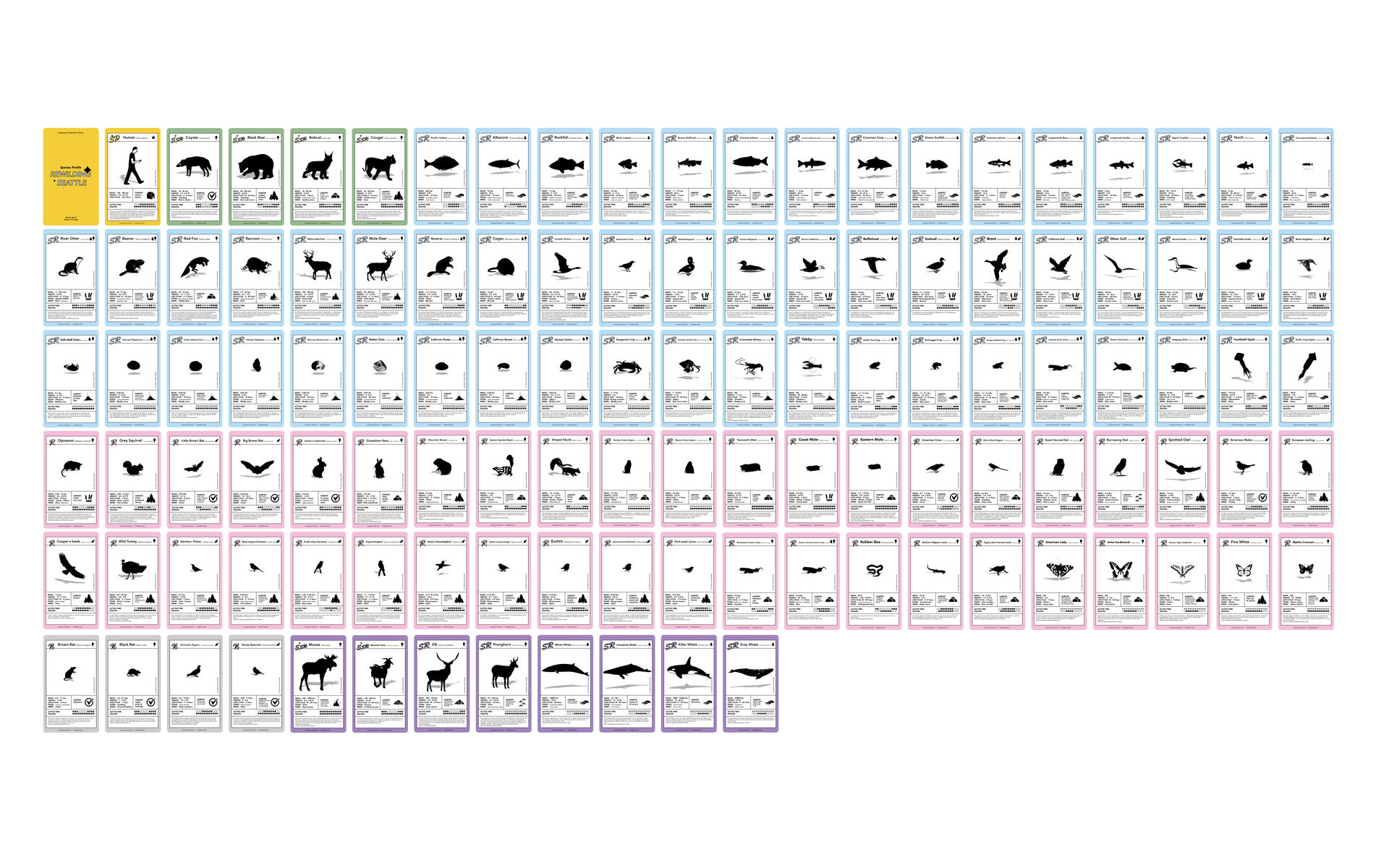
Image
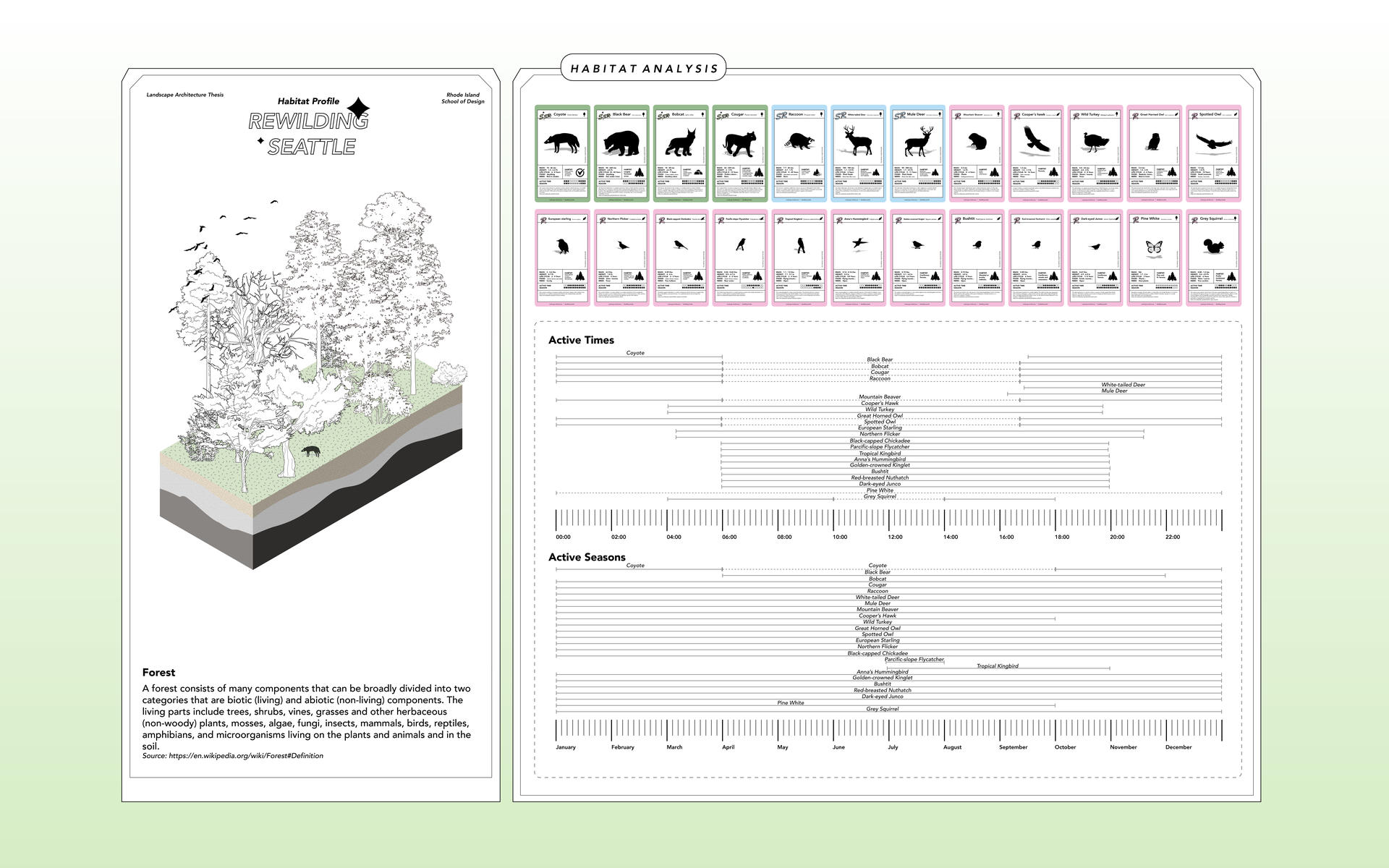
Habitat Analysis
Material / Medium: Digital
Dimensions: 16 X 10 Inches
Year: 2021
Image

Future Vision
Material / Medium: Digital
Dimensions: 16 X 10 Inches
Year: 2021
Image
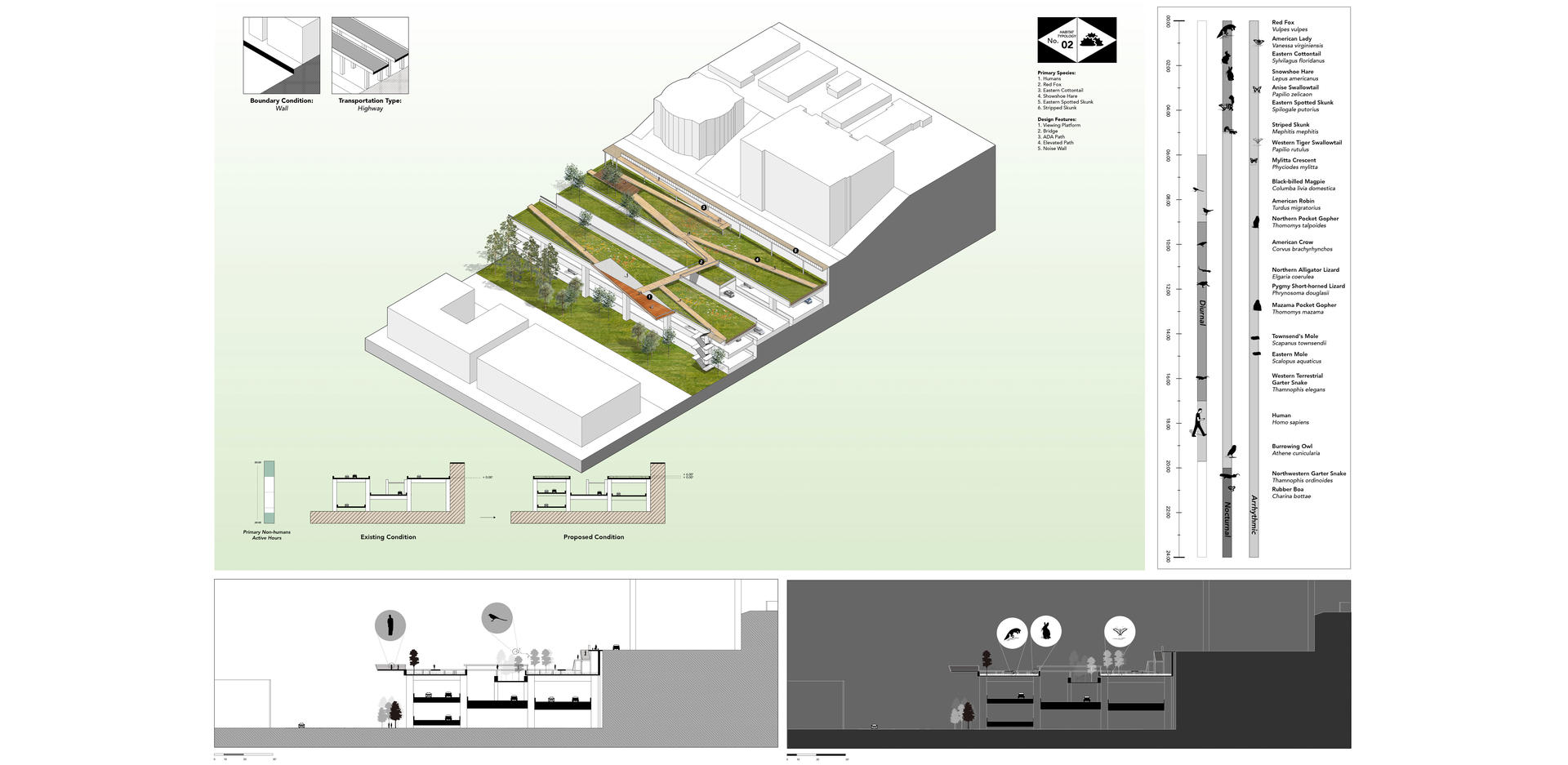
Corridor Typology: Scrubland
Material / Medium: Digital
Dimensions: 16 X 10 Inches
Year: 2021
Image
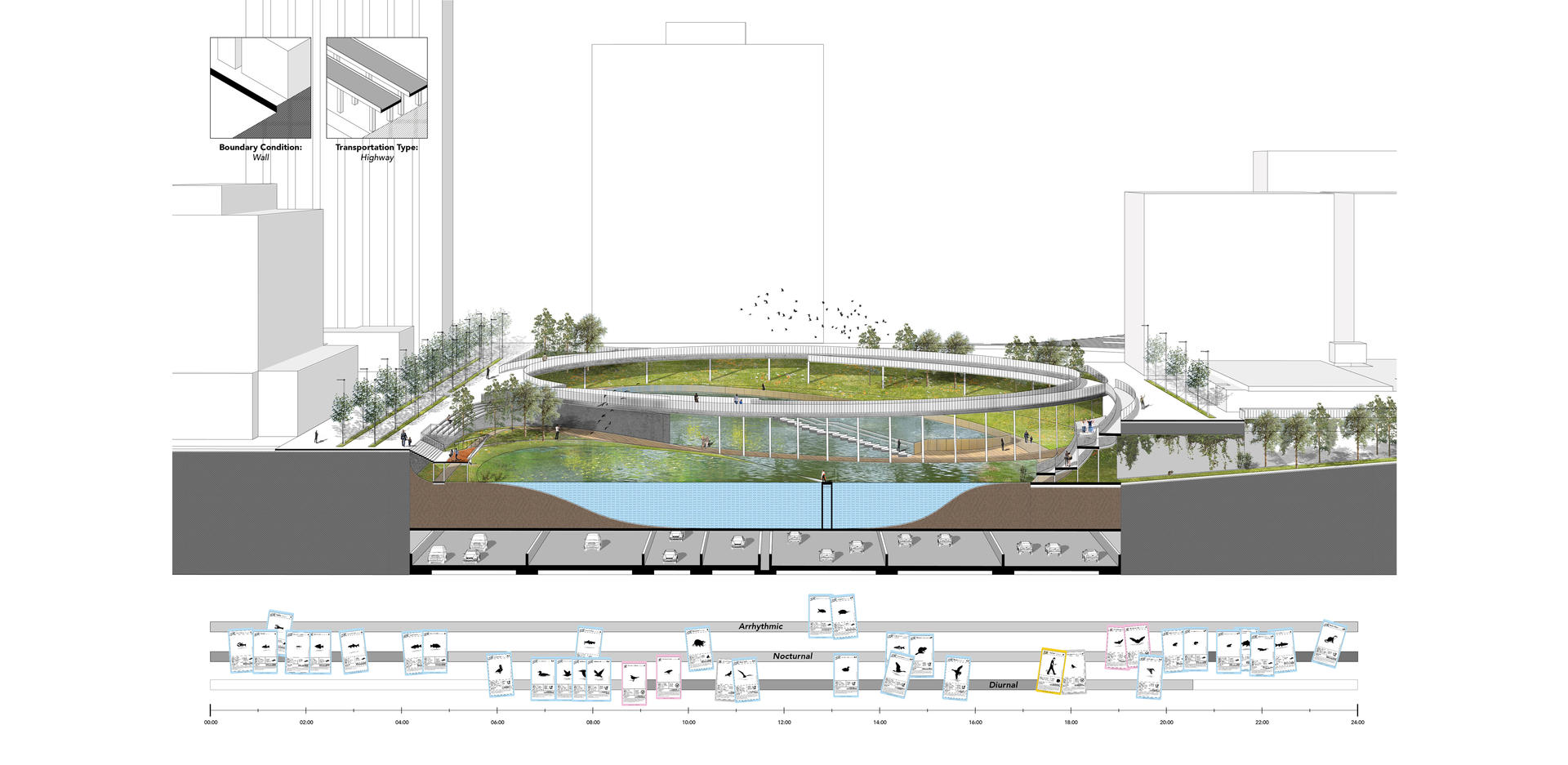
Fresh Water Pond and Wetland Habitat
Material / Medium: Digital
Dimensions: 16 X 10 Inches
Year: 2021
To restore the freshwater wetland and pond habitat in the existing location of the freeway park, the existing highway traffic circulation will be moved to the lower level. The structure will be redesigned and enhanced to achieve the function.
Image
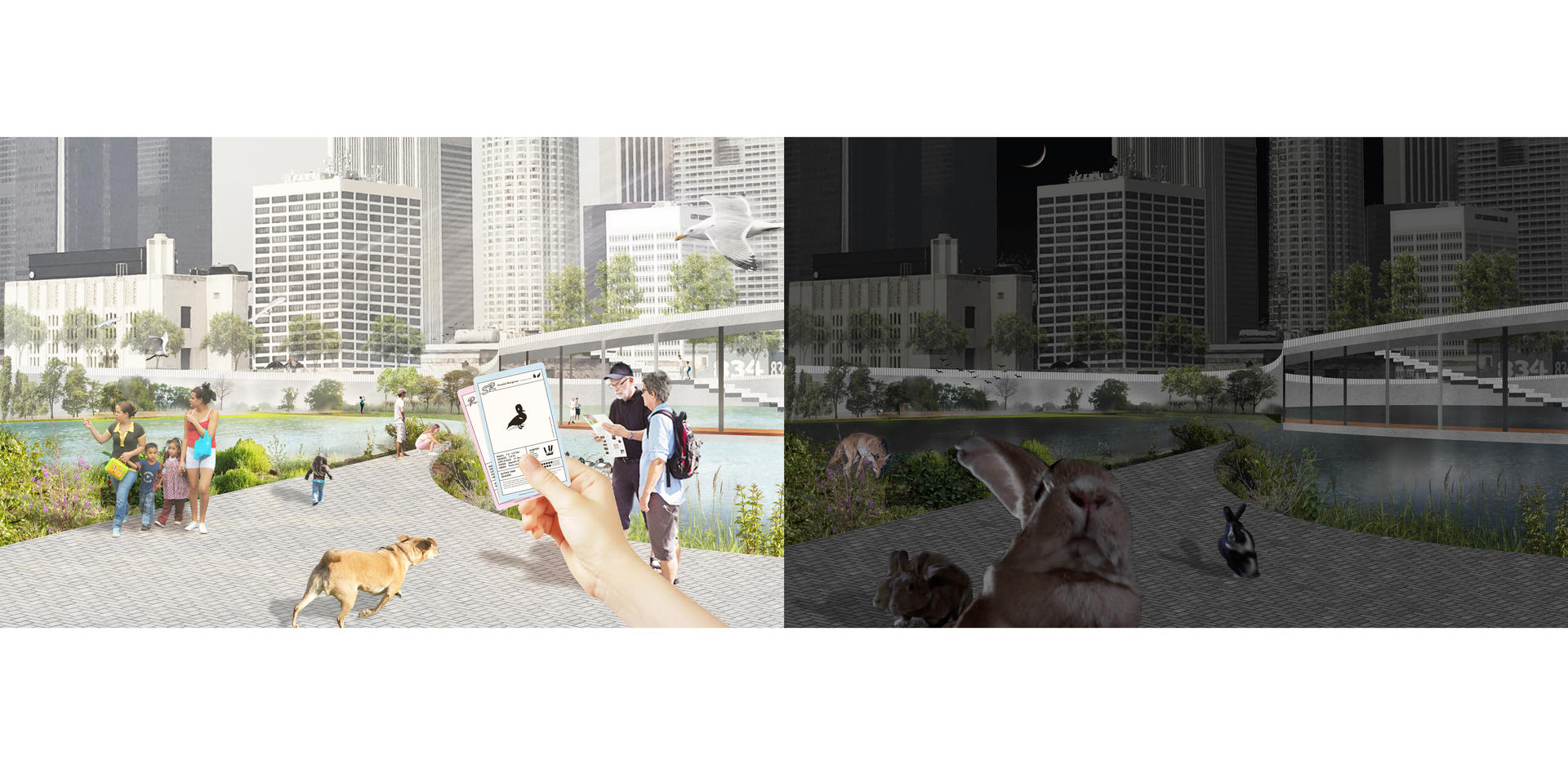
BIBILOGRAPHY
Borghini, Andrea. “Explorations on the Idea of Nature.” ThoughtCo. Accessed May 26, 2021. https://www.thoughtco.com/the-idea-of-nature-2670631.
Carnivore Spotter. Accessed May 26, 2021. https://carnivorespotter.org/.
Cordeiro-Rodrigues, Luis. Tensions between Multicultural Rights and the Rights of Domesticated and Liminal Animals: An Analysis of Will Kymlicka and Sue Donaldson’s Philosophy, 2015.
Cronon, William. “The Trouble with Wilderness: A Response.” Environmental History 1, no. 1 (1996): 47. https://doi.org/10.2307/3985063.
Desimini, Jill. “To Multiply Or Subdivide: Futures Of A Modern Urban Woodland.” Scenario Journal, April 18, 2014. https://scenariojournal.com/article/to-multiply-or-subdivide/.
Donna J. Haraway, “A Cyborg Manifesto: Science, technology, and Socialist-Feminism in the Late Twentieth Century,” in Simians, Cyborgs, and Women: The Reinvention of Nature (New York: Routledge, 1991), 149-181.
Donna J. Haraway, “Tentacular Thinking: Anthropocene, Capitalocene, Chthulucene”, Staying with the Trouble: Making Kin in the Chthulucene, 2016.
Ellis, Erle C. Anthropocene: a Very Short Introduction. Oxford: Oxford University Press, 2018.
Galen Cranz is Professor of Architecture at the University of California at Berkeley. “Changing Roles of Urban Parks.” SPUR, March 3, 2016. https://www.spur.org/publications/urbanist-article/2000-06-01/changing-…;
Gehrt, Stanley D., Chris Anchor, and Lynsey A. White. “Home Range and Landscape Use of Coyotes in a Metropolitan Landscape: Conflict or Coexistence?” Journal of Mammalogy 90, no. 5 (2009): 1045–57. https://doi.org/10.1644/08-mamm-a-277.1.
Herbert, Brian, and Kevin J. Anderson. Dune. The Butlerian Jihad. New York: Tor, 2003.
Hody, James W., and Roland Kays. “Mapping the Expansion of Coyotes (Canis Latrans) across North and Central America.” ZooKeys. Pensoft Publishers. Accessed May 26, 2021. https://zookeys.pensoft.net/article/15149/.
Malone, Nicholas, and Kathryn Ovenden. “Natureculture.” The International Encyclopedia of Primatology, 2016, 1–2. https://doi.org/10.1002/9781119179313.wbprim0135.
Meyer, Elizabeth Meyer. The Expanded Field of Landscape Architecture, 1997.
Sanders, Scott Russell. Staying Put: Making a Home in a Restless World. Boston: Beacon Press, 1993.
Slater, Candace. Amazonias Edenic Narrative, 2012.
T., Forman Richard T. and Michael Godron. Patches and Structural Components for a
Landscape Ecology, 1981.
T., Forman Richard T. Urban Ecology: Science of Cities. Cambridge University Press, 2016.
“Anthropocene.” Wikipedia. Wikimedia Foundation, May 26, 2021. https://en.wikipedia.org/wiki/Anthropocene.
“Biophilia Hypothesis.” Wikipedia. Wikimedia Foundation, February 14, 2021. https://en.wikipedia.org/wiki/Biophilia_hypothesis.
“City.” Wikipedia. Wikimedia Foundation, May 19, 2021. https://en.wikipedia.org/wiki/City.
“Food Chains, Food Webs, and Energy Pyramids.” Food Chains, Food Webs, and Energy Pyramids | Texas Gateway. Accessed May 26, 2021. https://www.texasgateway.org/resource/food-chains-food-webs-and-energy-…;
“Food Web.” Wikipedia. Wikimedia Foundation, May 17, 2021. https://en.wikipedia.org/wiki/Food_web.
“KurzweilTracking the Acceleration of Intelligence.” Kurzweil Walking in nature lowers risk of depression scientists find in MRI study Comments. Accessed May 26, 2021. https://www.kurzweilai.net/walking-in-nature-lowers-risk-of-depression-….
